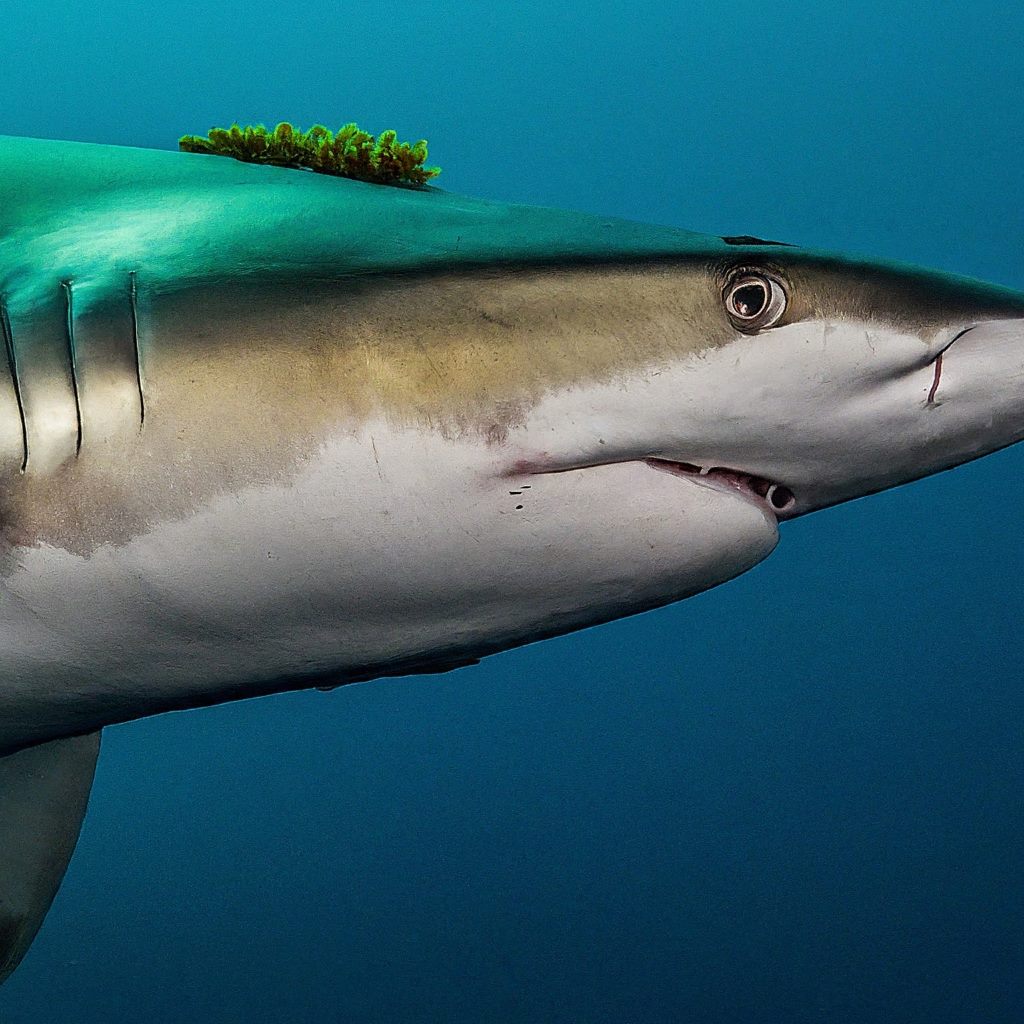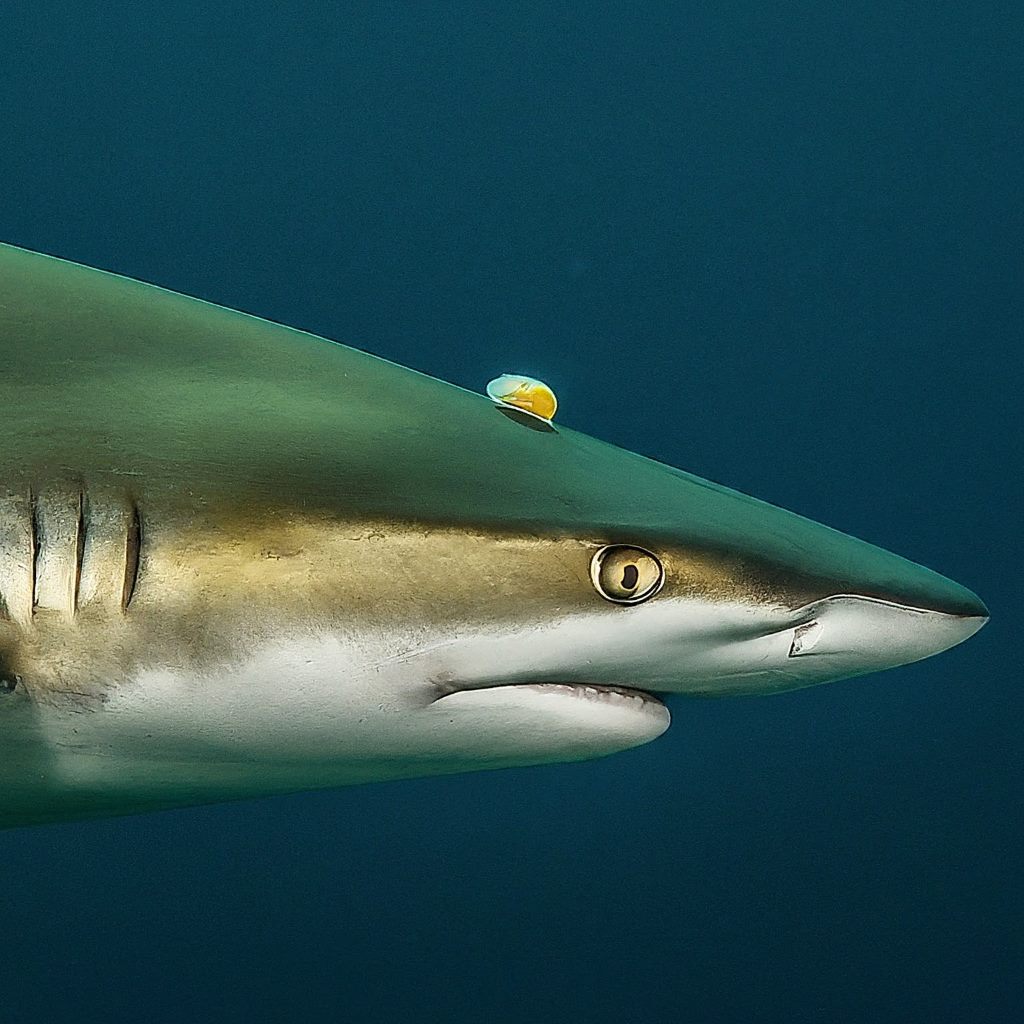Sharks, despite their reputation as apex predators, are not immune to the intricate world of parasites. With over 2,000 identified parasites affecting them, sharks experience bacterial, viral infections, and infestations that impact their overall health. This article delves into the classes of parasites found in sharks, their impact, and some unique examples of these fascinating organisms.
Understanding Parasites: Do All Sharks Contain Parasites?
Parasites are organisms that live in or on another organism, known as the host, deriving nutrients from the host at the host’s expense. This relationship can be harmful to the host, beneficial to the parasite, or both. Parasites have coevolved with their hosts over millions of years, resulting in complex and sometimes highly specialized interactions.
Yes, virtually all sharks can harbor parasites. The sheer diversity of shark species contributes to a wide array of parasites that may affect them. However, it’s essential to note that while many sharks host parasites, not every individual shark will necessarily be infested. The susceptibility to parasites can depend on various factors, including species, age, and environmental conditions.
Types of Shark Parasites
Shark parasites encompass various organisms that interact with their hosts in various ways. These parasites can be broadly categorized into different types based on their location and relationship with the shark host. Here are the main types of shark parasites:

1. External Parasites (Ectoparasites):
External parasites reside on the surface of the shark’s body, impacting the skin, fins, and gill filaments. The most common types include:
- Copepods: These small crustaceans attach themselves to the shark’s skin or gills, feeding on organic debris and potentially causing irritation.
- Isopods: Also known as sea lice, isopods latch onto the skin, often near the gill openings, affecting the shark’s comfort and potentially impeding gill function.
- Monogeneans: These flatworms attach themselves to the gills, fins, and skin of sharks, feeding on their blood and tissue fluids. Some species can reach high numbers, causing irritation and even damage to the shark’s host.
Impact on Sharks: External parasites can cause physical discomfort, compromise respiratory efficiency, and, in extreme cases, lead to behavioral changes such as increased scratching or rubbing against surfaces to alleviate irritation.
2. Internal Parasites (Endoparasites):
Internal parasites inhabit the shark’s internal organs or tissues, posing unique challenges to their hosts. Common internal parasites include:
- Tapeworms (Cestodes): These segmented flatworms attach themselves to the shark’s digestive tract, absorbing nutrients from the host’s ingested food.
- Nematodes: Roundworms that can infest various organs, affecting the overall health and potentially causing organ damage.
- Trematodes: Flatworms that can inhabit the liver, blood vessels, or other internal organs, leading to disruptions in organ function.
Impact on Sharks: Internal parasites often have a more profound physiological impact, causing malnutrition, organ damage, and influencing the overall health and fitness of the shark.

3. Protozoan Parasites:
Protozoan parasites represent single-celled organisms that can affect the skin and gills of sharks. One notable example is the genus Trichodina.
Impact on Sharks: Protozoan infections can lead to skin and gill irritation, affecting the shark’s well-being and potentially compromising its immune system.
- Pandarus sinuatus and Pandarus smithii: These parasites are commonly found on the body surface of white sharks, especially in the axil of the pectoral fins.
4. Reproductive Parasites:
Some parasites specifically target the reproductive organs of sharks, influencing their reproductive success. While less common, these parasites can have significant consequences:
- Parasitic Copepods: Certain copepod species infest the reproductive organs, potentially causing infertility or developmental abnormalities in shark embryos.
Impact on Sharks: Reproductive parasites can impair fertility, reduce reproductive success, and contribute to developmental issues in shark offspring.

1. External Parasites – Copepods and Isopods
Copepods, such as Ommatokoita elongata, are parasitic organisms attached to sharks’ corneas. While causing severe visual impairment, these parasites highlight the unique adaptations of sharks in surviving with compromised eyesight.
Parasites in Sharks’ Eyes
- Ommatokoita elongata: This parasitic copepod, found attached to the corneas of Greenland and Pacific sleeper sharks, induces severe visual impairment. Intriguingly, these sharks may not heavily rely on keen eyesight for survival.
2. Symbiotic Relationships Parasites
Remoras, often found attached to sharks, have a symbiotic relationship. While not causing harm to their hosts, remoras benefit by cleaning sharks of external parasites like copepods. This mutually beneficial interaction showcases the complexity of marine ecosystems.
Dinoflagellates: These single-celled organisms can form symbiotic relationships with sharks, living in their skin and gills. The dinoflagellates provide the shark with nutrients through photosynthesis, while the shark provides them with protection and nutrients.
3. Skin Parasites – Barnacles (Anelasma squalicola)
Anelasma squalicola is a parasitic barnacle that attaches itself to lantern sharks. Unlike typical barnacles, it goes beyond attachment, sucking out nutrients from the shark’s flesh and affecting reproductive organs. This peculiar adaptation underscores the diverse ways in which parasites exploit their hosts.
4. Internal Parasites – Tapeworms, Flukes, and Roundworms
Sharks can host a variety of internal parasites, including tapeworms, flukes, and roundworms. These organisms inhabit different organs, such as the intestinal valve, impacting the digestive system and overall health of the host shark.
The discovery of new species, like Trilocularia eberti, adds to our understanding of the intricate relationships between sharks and their internal parasites.
Examples of Shark Species Affected by Parasites
- Great White Shark (Carcharodon carcharias):
- Parasite Type: External (Copepods – Genus: Pandarus).
- Impact: Copepods attach to the skin and gill filaments, causing irritation. While generally not lethal, heavy infestations can affect behavior and overall health.
- Tiger Shark (Galeocerdo cuvier):
- Parasite Type: Internal (Tapeworms – Order: Tetraphyllidea).
- Impact: Tapeworms attach to the shark’s intestinal lining, absorbing nutrients. Heavy infestations can lead to malnutrition, affecting growth and overall fitness.
- Nurse Shark (Ginglymostoma cirratum):
- Parasite Type: Protozoan (Trichodina – Genus: Trichodinidae).
- Impact: Trichodina infections can lead to skin and gill irritation, impacting respiratory function. While not usually fatal, they can compromise overall health.
Effects of Parasites on Sharks
- Physiological Impact: Parasites can have direct physiological effects on sharks, affecting their overall health and fitness. For example, heavy infestations of internal parasites can lead to malnutrition, reduced growth rates, and even organ damage.
- Behavioral Changes: Parasite infestations may induce behavioral changes in sharks. Affected individuals may exhibit altered feeding patterns, reduced activity levels, or abnormal swimming behavior. These changes can impact the shark’s ability to hunt and evade predators.
- Immune System Suppression: Chronic parasitic infections can suppress the immune system of sharks, making them more susceptible to secondary infections and diseases. This compromised immune response can weaken the shark’s ability to fight off other threats in its environment.
- Reproductive Consequences: Some parasites can impact the reproductive success of sharks. For instance, infestations in the reproductive organs may lead to reduced fertility or developmental abnormalities in shark embryos.
Ecological Implications and Conservation Concerns
Understanding the dynamics between sharks and their parasites is crucial for comprehending broader ecological processes. Parasites play a role in regulating host populations, preventing overpopulation that could lead to resource depletion. Additionally, they contribute to the diversity and complexity of marine ecosystems, participating in intricate food webs.
As integral components of marine ecosystems, parasites are affected by human activities such as overfishing, pollution, and habitat destruction. Disruptions to these ecosystems can have cascading effects on shark populations and their parasites. Conservation efforts must consider the delicate balance between sharks, their parasites, and the overall health of the oceans.
Conclusion
Shark parasites represent a fascinating aspect of marine biology, highlighting the intricate relationships within ocean ecosystems. From the physiological impacts on individual sharks to the ecological implications for entire marine communities, the study of shark parasites contributes to our understanding of the delicate balance that sustains life beneath the waves. As we continue to explore and conserve the world’s oceans, unraveling the mysteries of shark parasites remains an essential and captivating endeavor.
